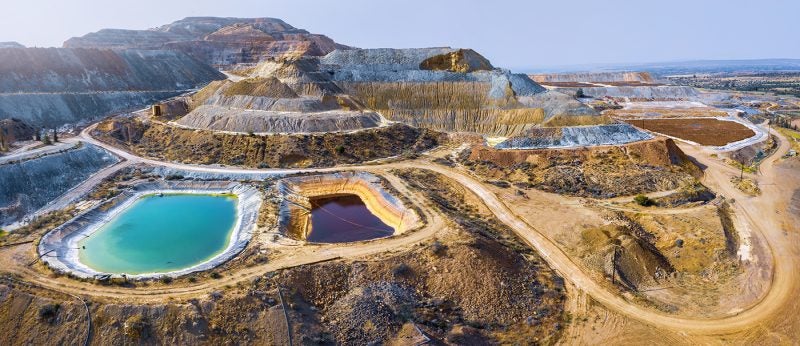
Tails dams are among the largest engineered structures in the world. And, they need to be built to last (tailings don’t just magically disappear over time). As mining professionals, it is our duty to ensure that we do everything we can to monitor these structures effectively. The technology exists. And, now, the #GISTM legislation exists. There are countless experts standing by to assist.
The deadline for achieving the Global Industry Standards on Tailings Management (GISTM) compliance is rapidly approaching, and yet in spite of this, it is shocking to see that the mining industry appears to be anywhere but close to a universal solution as it continues to suffer tailings failures around the world.
Ramjack has published a number of blogs dealing with the topic of Tailings Storage Facility (TSF) monitoring in hopes to elevate a safe operating environment, not just for mines, but for the communities that surround them. We have typically looked at TSF monitoring from a holistic approach, but with time running short, what can be achieved in the short term that sets you up for immediate success and the ability to evolve over the medium- to long-term?
At Ramjack, we don’t believe in a silver bullet, especially when it comes to multi-system solutions; what appears good on paper can easily descend into a nightmare when the rubber hits the road. Deploying an effective TSF solution is no different and mines should consider a step-by-step approach; but where to start?
There are four key areas when considering monitoring of TSFs: flooding, foundation failure, seepage and seismic. Not all TSFs will require technologies to monitor all of these areas. Some will have priorities over others depending on environmental and engineering factors affecting each TSF.
However, each of these areas can be successfully monitored with a number of key technologies which when combined, can provide an effective solution to mitigate the risk TSFs can pose to their surrounding area.
Flooding is the change in phreatic surface of a dam and one of the key areas to measure on all TSFs. Most TSFs have piezometers installed to measure this and vibrating wire piezometers enable the data to be transmitted in real time.
Seepage occurs when water flows in a direction that is unintended. It can occur in imperceptible amounts to the naked eye and unmanaged, can lead to catastrophic failure. Two of the most interesting technology applications for seepage monitoring are georesistivity and fibre sensing.
Georesistivity is applied to monitor the change in electrical resistance of the dam material over a period of time. A decrease in resistivity suggests the increased presence of water (ie seepage). The profile produced can highlight in great detail where these changes have been detected. This is a great tool for monitoring medium to long term stability of a TSF.
Fibre optics is also a relatively new application to TSFs which can also be applied to seepage monitoring. Detecting the backscatter characteristics of light, it is possible to detect thermal changes in the surrounding area, an indicator that cooler areas may be a result of seepage.
Foundation Failure and Seismic areas can be monitored very effectively with geotechnical instruments such as extensometers and shape arrays which react physically to any movement of the material they are inserted into. Interestingly georesistivity and fibre optics can play a role here too. A sudden increase in resistivity could indicate the formation of voids (air being infinitely resistant) which is a structural concern. Similarly, backscatter of light can also be used to detect movement in material.
For a truly effective solution, you need real time data. Without accurate data, you might as well be guessing. This doesn’t just apply to monitoring your TSF, but pierces through to every layer of your operation. Installing a battery operated MESH network would be a great step in the right direction; Ramjack’s MESH networks are able to connect with industry-leading geotechnical and hydrogeological instruments. All the technologies mentioned above can be connected to MESH networks or have their own built in 3G/LTE enabled systems to send data to the cloud. You can even connect existing instruments on site, enabling you to share budget with the geotechs and/or the environmental departments.
Finally, having invested in the right technology to acquire the data, and installing a network to transfer the data in real time, there is the question of visualisation of the data and being able to set threshold alarms so that any potential breach can be addressed as it happens and not when you get to your desk. Putting these elements together, using readily available instruments and software, your operations can quickly build a comprehensive understanding of the health of your TSF. Focus on the areas of most concern, knowing that you have a comprehensive TSF monitoring strategy.
Meeting the GISTM deadline is 10 months away, but sits within the next budget cycle and if you act now, compliance in this timeframe is still a realistic option. Our team is here to help you monitor, manage, and optimise anything that matters to your mine in real-time.

